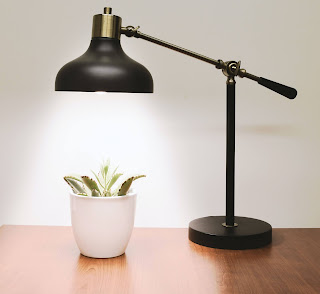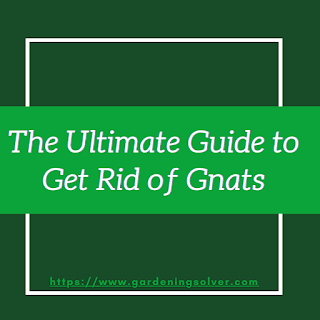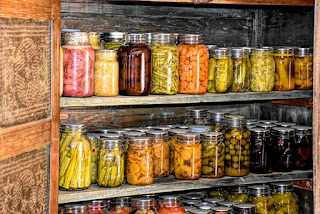Canning Supplies and Equipment List
Having the right canning equipment and supplies is like having the right ingredients for a recipe. It makes canning effortless and can give you the best results you want. In this guide, we'll cover the essentials for a successful canning experience.
You can find these items at specialty stores, home improvement stores, and big box stores, both online and in-person. They often carry a wide variety of canning supplies like different shapes and sizes of jars, etc. You can also get canning kits which is a great option if you don't want to buy everything separately.
Disclosure: This post contains affiliate links. We may receive commissions on purchases made from our chosen links with no extra cost to you. Learn more.
Water Bath Canner OR Pressure Canner
To begin your canning journey, you will first need to acquire a water bath canner or a pressure canner. Water bath canning and pressure canning are two popular methods of canning. Water bath canners use boiling water to process jars of food. They're ideal choices for high-acid foods, such as fruits, jellies, and pickles. Pressure canners, on the other hand, use steam pressure to process the jars of low acid foods such as vegetables, meat, and fish. Both water bath and pressure canners come in stovetop and electric versions.
Consider the Heat Source You'll be Using
When choosing a canner, you should not only consider its type, size, or capacity. But you must also consider the heat source you will be using. For example glass top stoves are not ideal for heavy canners. Therefore if you plan to use a large canner or if you're worried about damaging your glass top you can purchase an electric stand alone burner that will handle your canner. If you're looking for a burner that can be used indoors, I recommend the Cadco 1500W single burner with cast iron plate. But if you're looking for one to use outdoors only, I recommend the Camp Chef propane burner.
Canning Jars, Lids, & Rings
To get the ball rolling, you need these interdependent components. They work together to achieve safe as well as effective seal. Jars come in different sizes such as half-pint, pint, quart, and wide-mouth jars. Then the rings hold the lids in place and ensure a tight seal. These items can be reused many times, but make sure to first inspect for any signs of wear and damage before reusing them.
Canning Rack, & Lid Rack
These tools may not seem necessary but they make the process more efficient and organised. A canning rack helps to hold the jars in place so that they don't touch the bottom and break. Then the lid rack helps to hold lids and rings while they're being sterilised before using them. Moreover, the lid rack makes it easier to access lids especially when you're dealing with large batches of jars.
Canning Funnel, & Ladle
No one wants to get stuck cleaning up messy spills all over their kitchen after canning. These two simple tools can prevent any unwanted messes. A funnel is more helpful when dealing with liquid and runny foods, while a ladle can help to scoop solid and chunky foods.
Bubble Popper
This is a simple essential canning accessory that can help to make a difference in the quality of your canned food. A bubble popper is used to remove any air bubbles from the jars before sealing. Air bubbles trapped in a canning jar can cause the food to oxidize and lose quality. But not all recipes require the use of bubble poppers.
Headspace Measuring Tool
Just like a bubble popper, a headspace measuring tool is also used to ensure that a canning jar is correctly filled. These tools are often used in conjunction to prevent risks of oxidation as well as spoilage. A headspace measuring tool is used to measure the amount of space between the food and top of the jar.
Leaving the correct amount in a jar is very important for proper sealing and storage. For example, if there's too little headspace, the lid may not seal properly which may cause food to spoil. So before you start canning a recipe, you must know how much headspace to leave.
Jar Lifter, Lid Lifter, & Jar Wrench
Some people may say that it is possible to can without these three speciality items or they can be substituted with everyday kitchen tools. It's technically possible, but it is certainly not the convenient and efficient way to go about it.
These three tools have different purposes. A jar lifter, also known as canning tongs, is used to remove hot jars from a canner after they've been processed. A lid lifter typically called a magnetic lid wand is used to remove hot lids from a pot of boiling water when sterilising lids. The jar wrench is used to secure the bands on jars before and after canning to ensure a proper seal.
Labels and Markers
Labels and markers are also important for canning. They help you to keep things organized and easy to find especially if you're canning a variety of different foods. You can label the contents of each jar and date when your food was canned so that you use it within recommended shelf life.
Canning Book
Whether you're a novice or a seasoned canner, a canning book can be a valuable resource in your canning journey. Apart from coming with so many recipes for you to try, canning books can provide you with more detailed information on how you can do everything accordingly. They're also a lifesaver as they provide tips to solve issues in case if you run into any problem while canning
Other items
In addition to the supplies and equipment mentioned above, there are a few other items and pieces of equipment that can be useful for canning. These include timer, knife, cutting board, peeler, multiple chopper, measuring cups, jar scrubber, lid opener, colander, food mill, canning salt, spices, pectin, etc. Some of these are optional, but can make canning more convenient and enjoyable.
To sum it all up,
These above-mentioned supplies and equipment are very helpful to make the canning process more efficient and organized. However, what's even more important is to follow the proper canning methods to ensure your food is safe and of high quality.
Feel free to share this article with anyone who might be interested in canning. Or bookmark it to make it easy to find it again in future when you need information about canning supplies and equipment. And if you have any questions or comments, please feel free to add them below.
Happy Canning!!
RELATED







Comments
Post a Comment
Have something to say? Feel free to leave a comment.